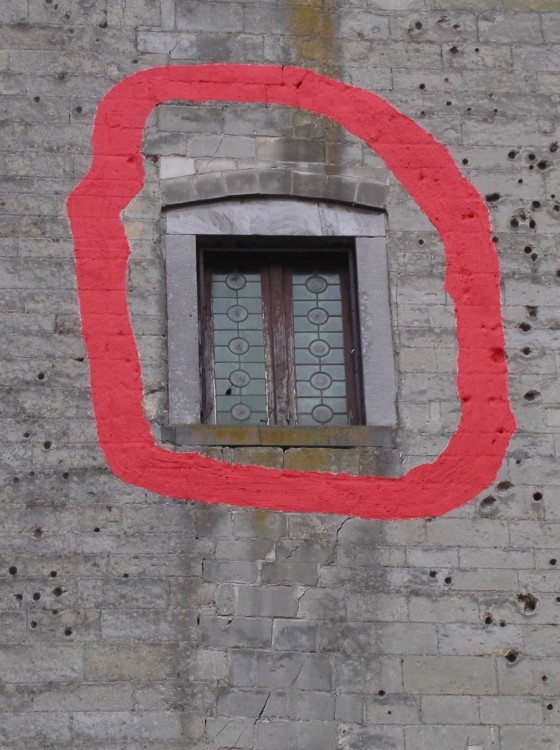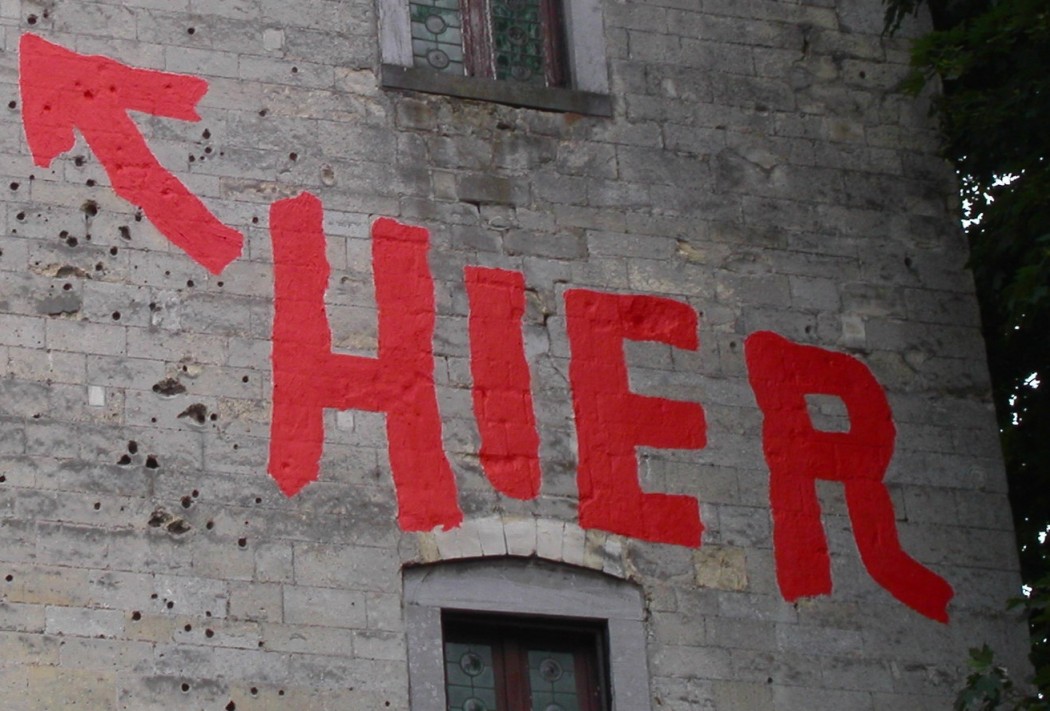SITE-SPECIFIC INSTALLATION
For Hier, a window of the Moerenpoort, a well-known, medieval tower close to the center of the Belgian city Tongeren, was marked with a circle of red paint, an arrow and the note ‘hier,’ the Flemish word for ‘here.’
The Moerenpoort was built in 1379 and is the last existing city gate of Tongeren. This small city (30,000 residents) is located in the Northern, Flemish part of Belgium and is the oldest town in the country. In its earlier history, it was the only Roman administrative capital in Belgium, known as Atuatuca Tungrorum.
Across cultures, the belief that locations and objects can capture the ‘energy’ of a certain period, event, or person, is deeply rooted in the human psyche. In European history, it finds its expression in among other sources, Christian relics and places of pilgrimage. Enthralled by the originality and sacredness of these often very ordinary items or locations, masses of visitors frequent these sites each year. These visitors travel to these sites with the profound wish to get in touch with the captured ‘energy’ and to position themselves with regard to it. In some sense, it is this same principle that continues to draw visitors and tourists to cultural heritage sites of all kinds, including historic places and (art) museums.
The window of the medieval city gate that is pointed out by the word ‘hier’ suggests that the selected location may have ‘captured the energy’ of an event with historic importance and therefore, be of interest to the public. But at the same time the appearance of the writing does not match with the official municipal conventions that are used to highlight or present a historical site. Instead it calls to mind street graffiti, or perhaps a photo in a tabloid where the place where something shocking or disgraceful happened is clearly marked with a brightly colored circle and arrow. In contrast to the above mentioned self-positioning, aimed at coming into contact with the sacred, this action could instead connote a user-defined approach: marking a postcard to let family or friends know where you have been during your trip.
This temporary work was realized in 2007 during the regional festival “Artuatuca,” with the support of the municipality of Tongeren and the Flemish government. In 2018 (in the scope of the "KRASJ Biennale") a second version of work was realized in similar setting: at the Koepoort (built around 1600), a medieval tower in the centre of the Belgian city Ninove.
photography: Geert Jan van Rooij, Helmut Dick


